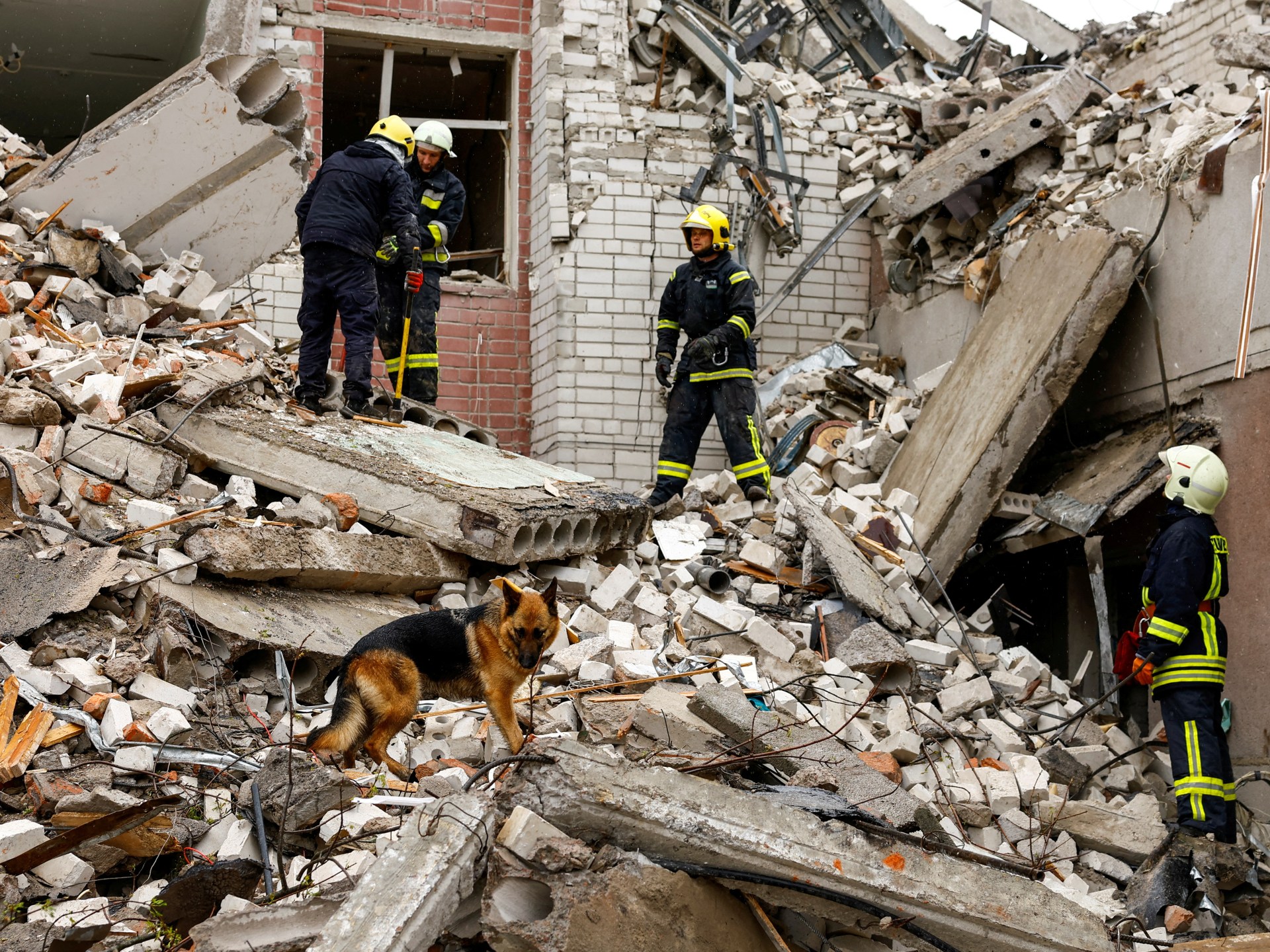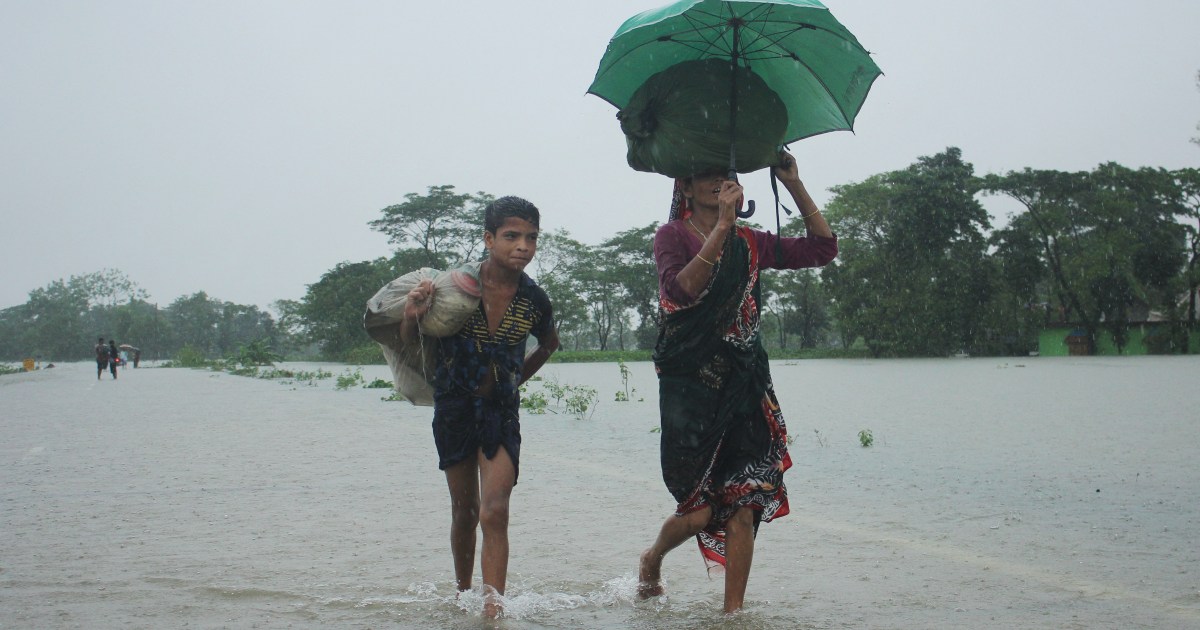Russia pounds Ukraine’s cities and front lines as air defences dwindle
Ukraine’s dwindling supply of air defence missiles enabled Russia to devastate its energy infrastructure with ever-increasing effectiveness during the past week, while its artillery shell rationing allowed Moscow’s forces to continue a slow advance on the ground.
Making matters worse, Ukraine recorded no counterattacks against energy or military targets inside Russian territory.
Meanwhile, US congressional Republicans, who have effectively frozen aid to Ukraine since December, mulled over how and when to table a new bill to approve $60bn in aid requested by the administration of President Joe Biden.
Dmytro Kuleba, the Ukrainian foreign minister, said his embattled country was urgently demanding long-range Patriot air defence batteries it needs from European NATO allies, rather than the United States.
“Nice and quiet diplomacy didn’t work,” he told the Washington Post, saying he was on a mission to effectively force European governments with more than 100 idling batteries to give up seven – part of a larger plan to ultimately source 26.
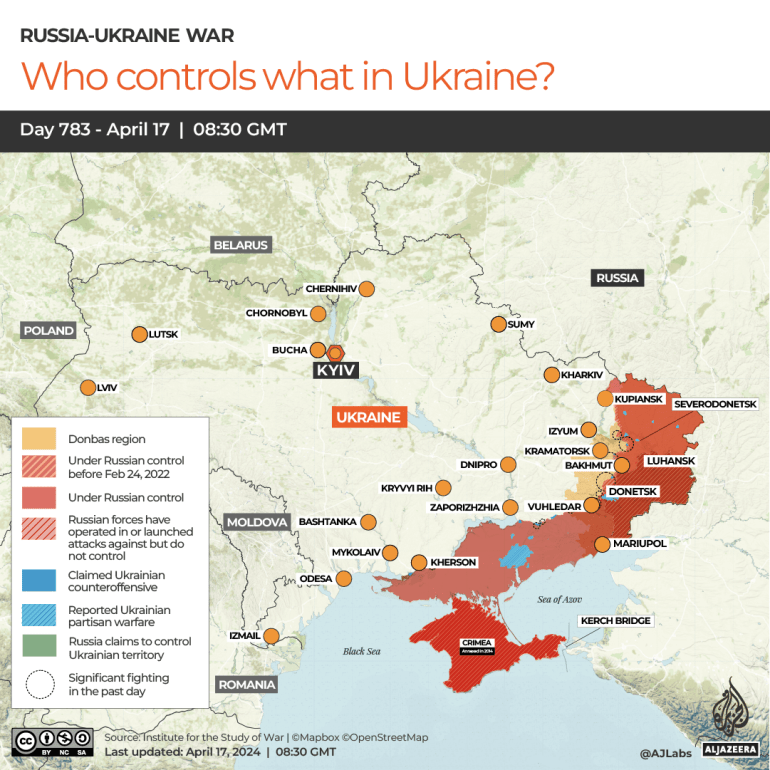
Germany said it was immediately transferring one battery and would look into transferring a short-range IRIS-T missile battery.
And Kuleba is not just guilting Europeans.
At NATO’s 75th anniversary, he aimed a barb at the entire alliance.
“I’m sorry to spoil the birthday party, but who can believe that the mightiest military alliance in the world cannot find seven batteries of Patriots to provide them to the only country in the world that is fighting ballistic attacks every day?”
A Russian bombardment using 82 missiles and drones destroyed the Trypilska thermal power station in Kyiv on Thursday, April 11. It was only the second time in the war that an entire power plant was taken out, and the first in the capital, which is supposedly the most heavily defended from air attacks.
Ukraine’s rate of success in countering threats is simply not enough to prevent massive destruction, Ukrainian President Volodymyr Zelenskyy told PBS.
“Electricity in the Kyiv region depends on [Trypilska],” he said. “Eleven missiles were headed towards it. The first seven, we took down. Four destroyed Trypilska.”
It has been a similar story in other recent Russian air attacks.
On the night of March 22, seven out of 44 cruise missiles and all 15 ballistic missiles penetrated Ukraine’s defences, damaging dozens of energy facilities in the largest attack against Ukrainian energy infrastructure since February 2022.
A week later, 11 out of 37 ballistic and cruise missiles penetrated defences, damaging more power plants.
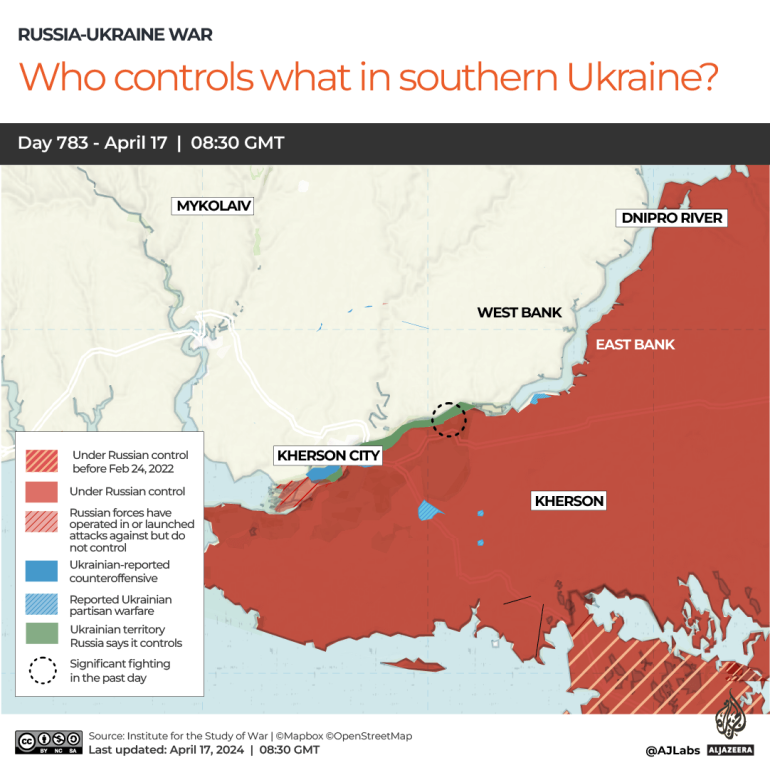
An analysis by the Institute for the Study of War, a Washington-based think tank, showed that between February and March Ukraine’s interception rate of Russian missiles fell from 60 percent to 50 percent, and suggested it would fall further.
“The increased effectiveness of Russian air strikes does not appear to result from the use of more missiles and drones in each strike,” the ISW said in its report. “Instead, Russian forces are exploiting the degradation of Ukraine’s air defence umbrella caused by continued delays in Western security assistance.”
Russian ground assaults
A similar story has been unfolding on the ground.
Since Russian forces took the eastern Ukrainian town of Avdiivka on February 17, they have pressed an advantage and inched forward, swallowing up villages.
Russian forces made more marginal gains west of Avdiivka and Bakhmut, which fell last May.
Much of the pressure fell on Chasiv Yar, a small town west of Bakhmut.
Ukrainian commander-in-chief Oleksandr Syrskyii said Russia aimed to capture it by May 9, Russia’s Victory Day holiday.
If it fell, it would open the way for attacks on what military analysts term the “fortress towns” of Kostiantynivka, Druzhkivka, Kramatorsk and Sloviansk in western Donetsk.
Syrskyii said on Saturday that the situation had “significantly worsened in recent days” because Russian units were again launching large mechanised assaults using “dozens of tanks and [armoured personnel carriers]”.
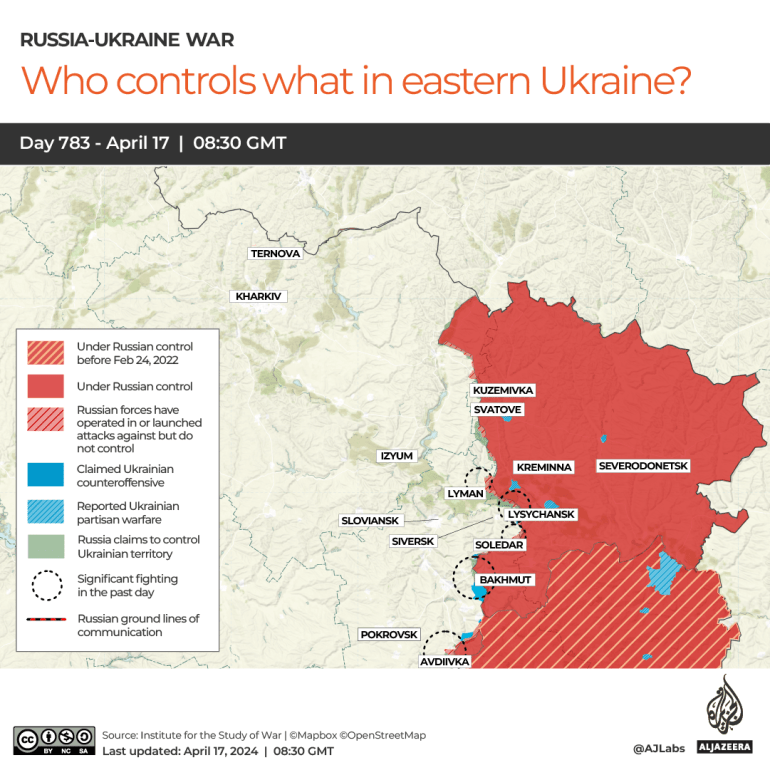
“This is facilitated by warm, dry weather, which made most of the open areas of the terrain accessible to tanks,” said Syrskyii. “Despite significant losses, the enemy is increasing its efforts by using new units on armoured vehicles, thanks to which it periodically achieves tactical success.”
He said he had ordered reinforcements of drones, electronic warfare systems to counter enemy drones, and antitank missiles.
On the other hand, Russian forces were limiting manpower around Bakhmut, said Oleg Kalashnikov, a Ukrainian army spokesman, using company-sized groups at most to avoid detection by Ukrainian drones.
And even though Russian formations were making marginal advances, often throughout the week, Ukrainian forces pushed them back again. But that, said military experts, came at a high cost.
“War is a physical human endeavour and you have a force that is utterly exhausted, not slightly fatigued,” said Ruth Harris, head of military research at the RAND Corporation, a US Air Force think tank.
“It’s a heavily attritional war. It’s messy, it’s bloody, there is nothing glorious about this,” she said.
In addition to its weakening air defences and what Zelenskyy described as a 10-to-one disadvantage in artillery rounds on the ground, Ukraine also faces hundreds of glide bombs a week. These are massive inertial munitions with payloads of up to 1,500kg fitted with fins for increased range.
“The glide bombs that are currently used are hugely devastating,” Harris told the Delphi Economic Forum in Greece.
“They’re cheap to make. They are pretty damn accurate and they can be adapted really quickly. They are fast and [the Russians] have a lot of them.”
“This is a war of mass cost and pace. That’s the operational factor on the ground.”
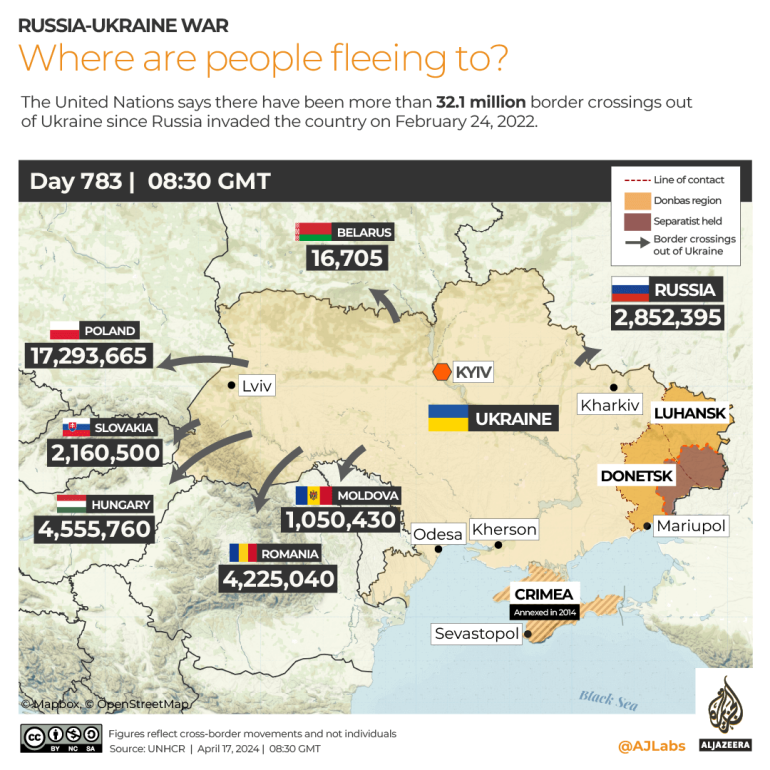
Zelenskyy told the German magazine Bild that Ukraine was using domestically produced drones to somewhat make up for the dearth in ammunition, but that these were not a replacement because their range is smaller and their payloads lighter.
He also said he could not rule out a broadening of the front with a new Russian assault on the cities of Sumy and Kharkiv, only 30km (17 miles) from the Russian border, which have in recent weeks been pounded by missiles, drones and glide bombs.
If NATO’s reputation was receiving a battering, the incipient military network Russia was forming appeared to be on the rise.
Russia has successfully sourced artillery shells from North Korea, drones from Iran and, according to Bloomberg, machine tools and electronic components from China.
All four countries, NATO’s supreme allied commander in Europe Christopher Cavoli told the US House, were in the process of forming “interlocking, strategic partnerships in an attempt to challenge the existing order”.
In terms of harnessing their defence industrial might, they appeared to have the upper hand.


